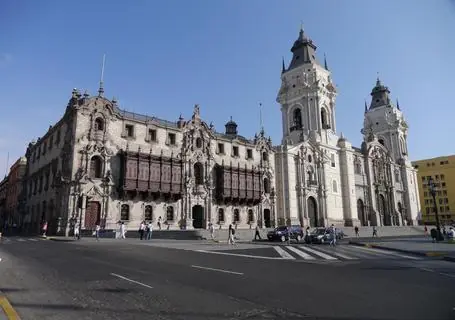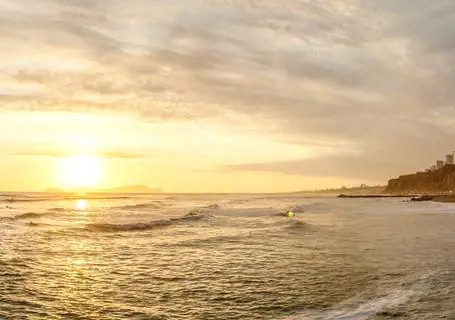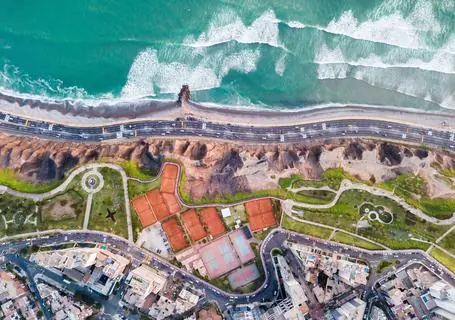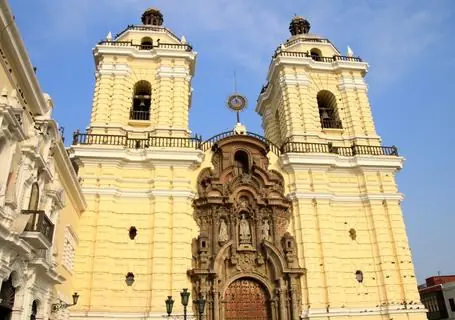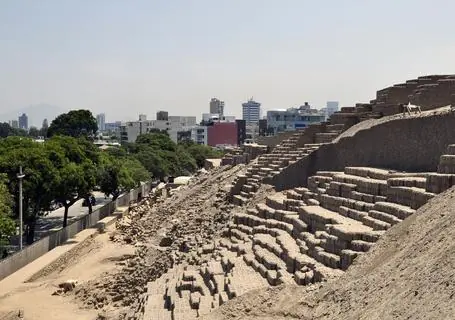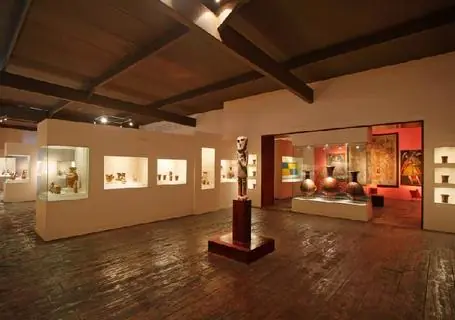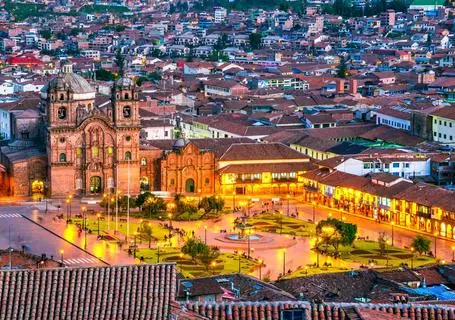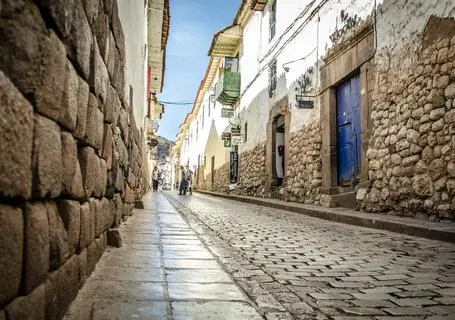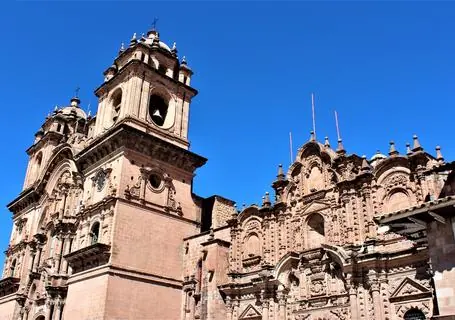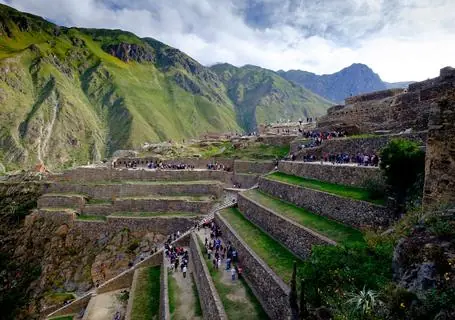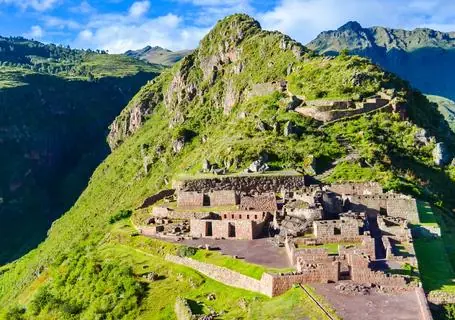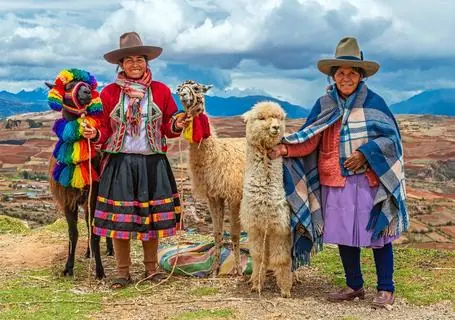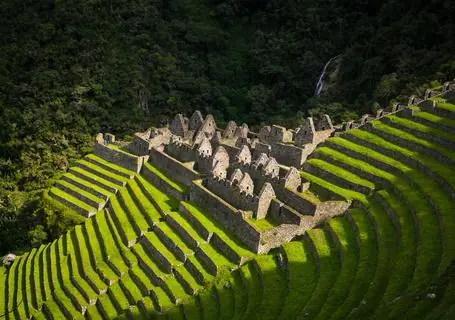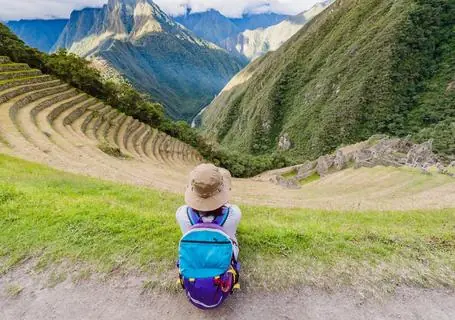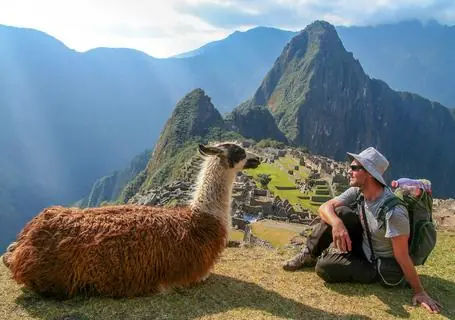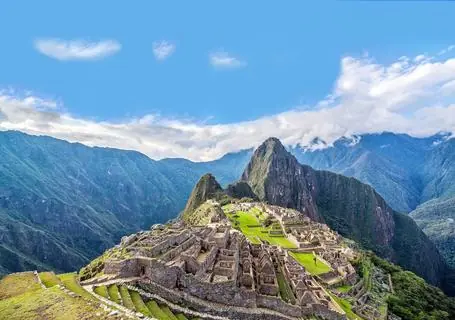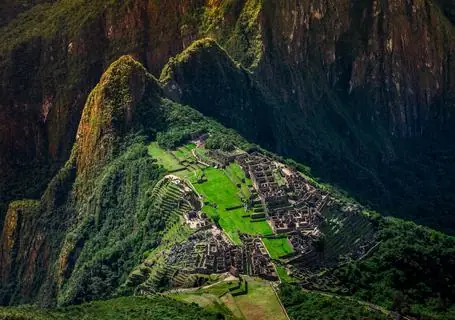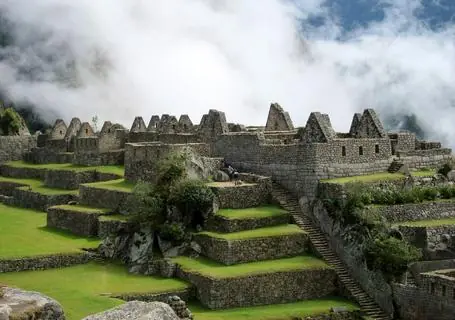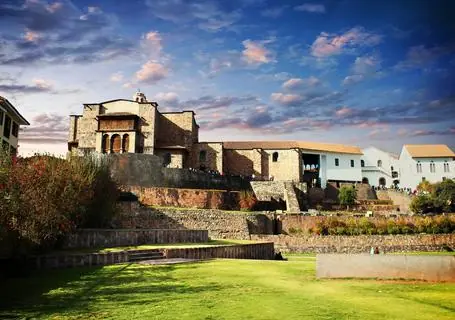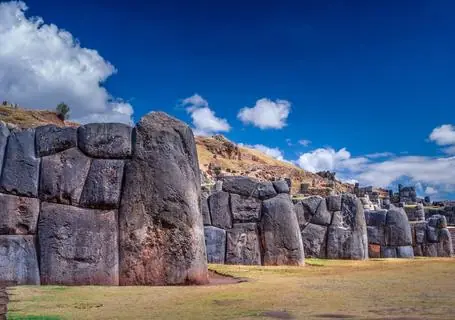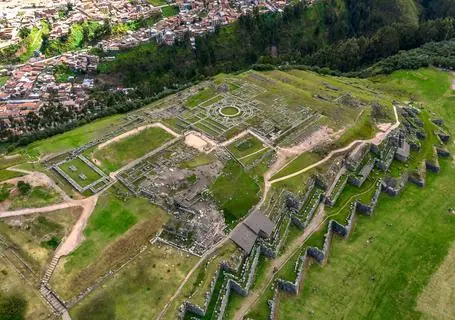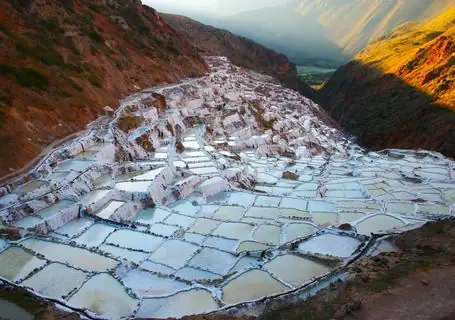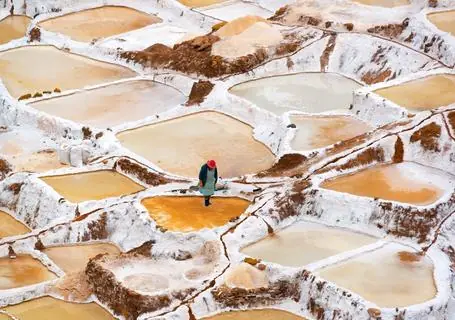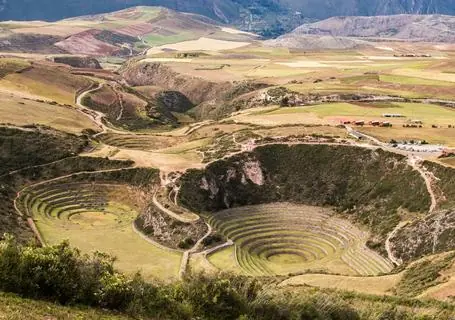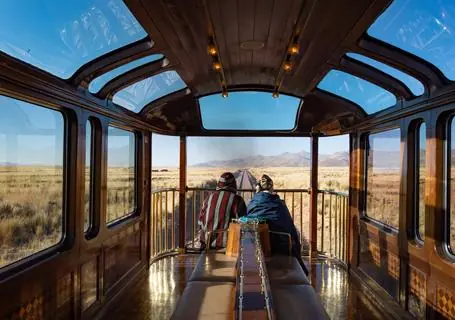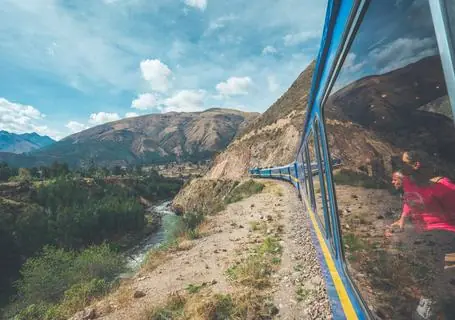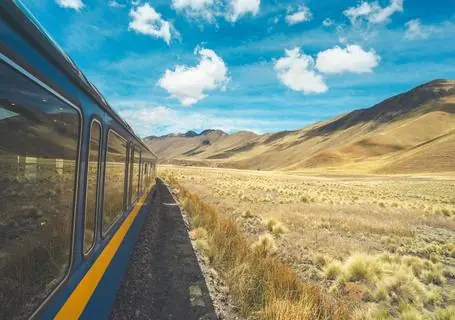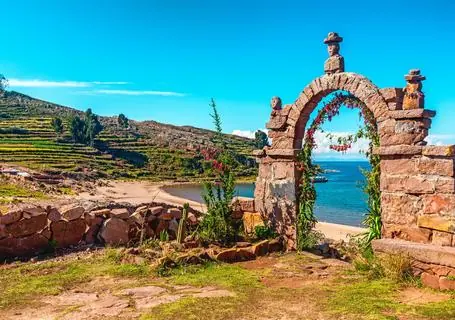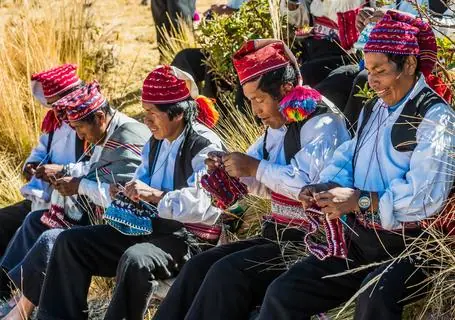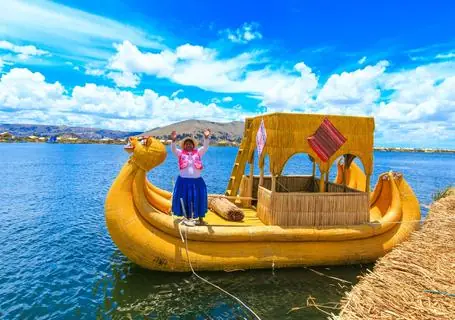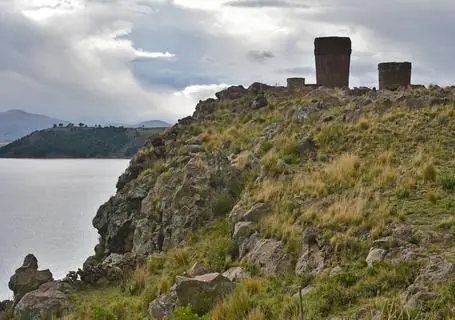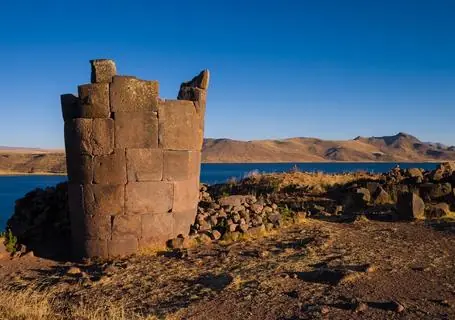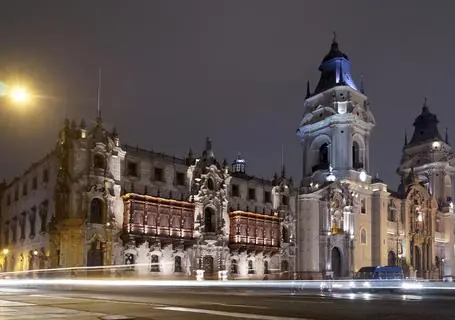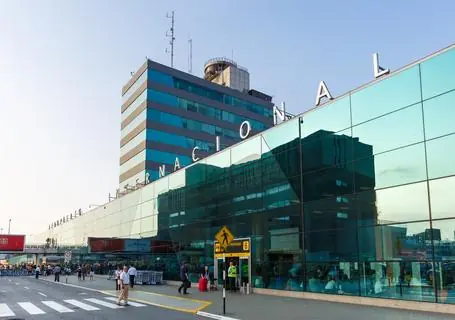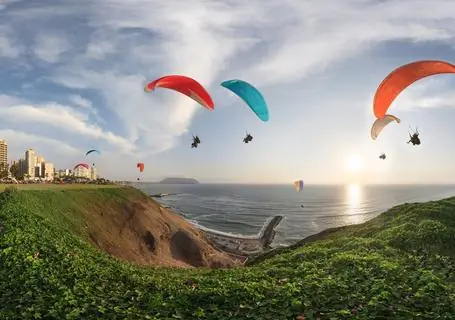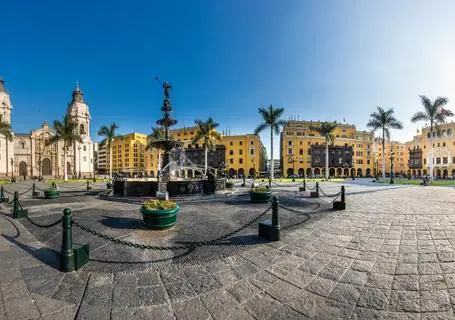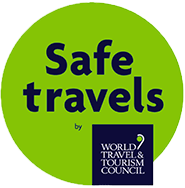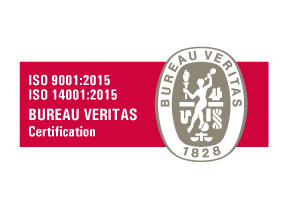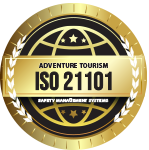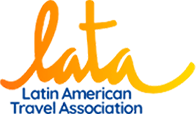Peru Luxury Tour - 12 Days
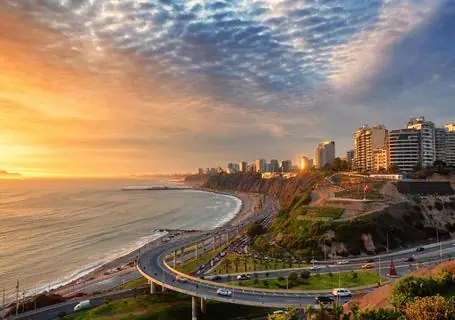
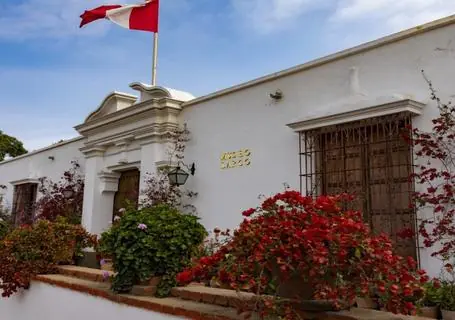
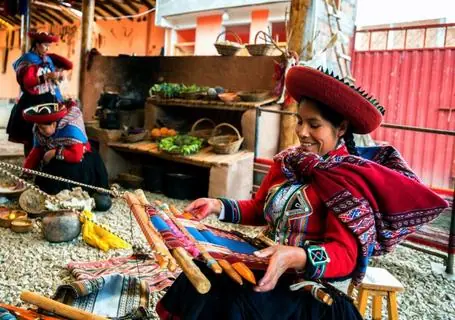
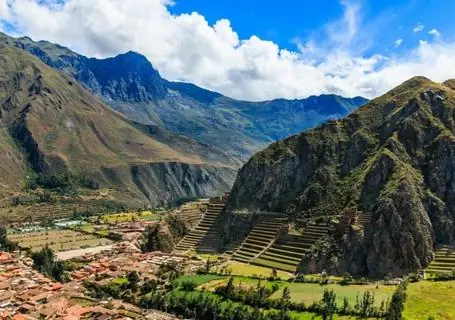
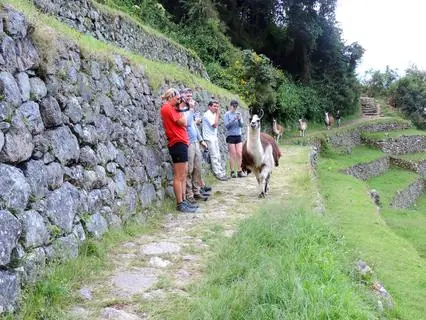
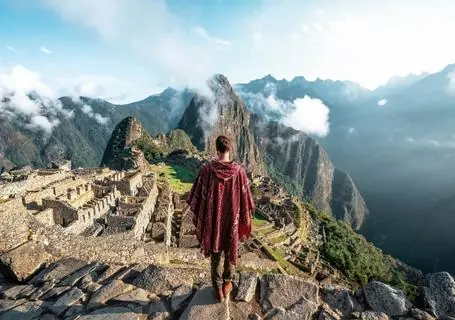
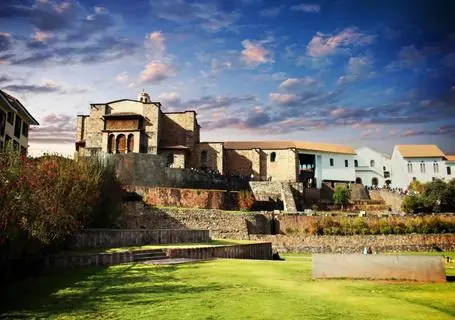 View All PhotosView All Photos
View All PhotosView All PhotosLuxury
Moderate
Cusco, Inca Trail, Lima, Machu Picchu, Puno, Sacred Valley
Archaeological / Architecture, Local producers
| cardinfo-text-5 | ||
| cardinfo-text-7 | Not included | |
| cardinfo-text-8 | cardinfo-not-included | |
cardinfo-text-10
h2-title-1
Join Valencia Travel on a 12 day luxury tour of Peru, that visits all of the country´s signature sights on a supremely indulgent voyage through this South American gem.
On this opulent Peru vacation package, you will begin with a visit Lima, The City of Kings an eclectic modern capital. Take in the sights, sounds, smells and tastes of the the culinary capital of The Americas. Visit the historical downtown for excellent insight into Peru´s colonial history.
Then visit the cosmopolitan, historical City of Cusco. This ancient Inca capital is today, a cobblestoned city where Inca foundations and modern day luxury facilities combine seamlessly. Then head to the bountifully lush Sacred Valley of the Incas. Here you will explore famous Inca ruins and some more off the beaten path Inca archaeological sites.
Hike along the enigmatic Inca Trail to visit the world wonder Machu Picchu, as you arrive at Machu Picchu through the iconic Sun Gate. The short Inca Trail is a journey to Machu Picchu is an awe-inspiring experience. It passes by the dramatic views of mountain peaks, lush valleys, forests, and the Urubamba River. Machu Picchu’s subtropical climate creates a unique ecosystem, more than 2,430 meters above sea level, that’s one of the richest in the world. Opting for our luxury Inca Trail tour means that you will be exploring the highlights of Peru in that perfect way you had always imagined. This luxurious itinerary has been specifically fashioned for your total comfort, unique cultural experiences, and transformative, life-enhancing activities by the experts of this region, the local people.
Then visit the jewel in the Inca crown and most precious historical and treasured architectural phenomenon of all South America. Machu Picchu. Our Luxury Machu Picchu hiking tours are specifically designed to allow you to experience spectacular archeological attractions constructed by the imperious Inca master-builders. Explore this spectacular site and one of the Seven Wonders of the modern world, Machu Picchu. The epitome of the Incas’ amazing architectural prowess. Hidden away in the vastness of the surrounding mountains, Machu Picchu is the ultimate inspiration for your epic adventure to one of the modern world’s most memorable and astounding citadels. Throughout our Machu Picchu luxury tours adventure, you will have the opportunity to immerse yourself in over 5000 years of fascinating history and astounding traditional living culture.
Then head south to visit the transcendental indigo waters of Lake Titicaca. This is the mythical birthplace of the Inca Civilization. Titicaca is home to generations of Quechua and Aymara communities from the Altiplano region. We will take the opulent Titicaca train through magnificent Andean terrains in the lap of luxury to our ultimate destination and the depths of the gigantesque lake.
On this luxury journey through the land of the Incas, experience the perfect balance of stylish comfort, exquisite service, and traditional ambience, which accompanies you along your way, as you savour the most delectable cuisine in the world. Our luxury Peru tour is a completely unique and sumptuous adventure through the legendary cities of the Incas.
So, go ahead and pamper yourself! Reserve this exquisite experience today!
 Free Brochure
Free BrochureReady to explore? Download the brochure and start planning!

Your FREE travel expert is just a click away
Or Call us now! (888) 803 8004
h2-title-2
Day 1:Welcome to The City of Kings
When you arrive in Lima, the capital of Peru, a Valencia Travel team member will be waiting for you at the Jorge Chavez International airport to take you in private transport to your luxury hotel, in the Miraflores district.
After a short rest, you will be invited to take part of a cocktail making class designed to educate and inspire you with the history of Peruvian alcohol, Pisco. You will learn about the origin of this iconic Peruvian drink, and the bartender will demonstrate the techniques of how to make your own Pisco Sours. so, grab a shaker and learn the secrets of mixology!
Finally, you will end your day enjoying a sumptuous dinner on the patio of your luxury hotel.
- Meals: Dinner and Drinks
- Transfer In: Lima Airport to Hotel (1 hour Approx).
- Tour Guide: Local Tour Guide: English/Spanish
- Excursion: Cocktail Making Class
- Hotel: Hotel B or Similar - Alcoba Suite Room with private bathroom.
Day 2:Historical Tour of Lima Downtown and Larco Museum Visit
After a delectable breakfast at your hotel, we will head out in our private transport to the Lima downtown. We will make a brief stop at The Huaca Pucllana. Huaca Pucllana was an important ceremonial and administrative centre of the Pre-Hispanic Lima Civilization, which developed along this part of the Peruvian coast between the years of 200 AD and 700 AD. This sacred ceremonial site was built from seven staggered platforms surrounded by a plaza and high walls. It’s a stunningly impressive site and certainly not what one would expect to find in the vibrant Miraflores district!After passing by The Huaca Pucllana briefly with your bilingual guide, we’ll drive to the historic center of Lima, all of which is a designated UNESCO World Heritage site. We’ll go to the beautiful Plaza de Armas (Lima’s main square), which is surrounded by impressive colonial and Republican-era buildings, many of which have ornate wooden balconies. Some of Peru’s most important buildings surround the square, including the Government Palace, The Cathedral of Lima, the Archbishop’s Palace of Lima, the Municipal Palace, and the Palace of the Union.
We will visit the Cathedral of Lima, which was completed in 1649. It’s a huge structure with a large central nave and 14 side chapels. Inside, we’ll see the sculptures and paintings that decorate the interior. The cathedral is also home to the tomb of the conquistador Francisco Pizarro.Next, we’ll walk one block to the Convent of San Francisco, founded in the 1530s and completed in 1766, it is one of the most important religious buildings in PeruThe Monastery of San Francisco was blessed in the 17th century, 1673 to be precise, but wasn’t completed until 1774. Over the years, it’s withstood several serious earthquakes in Lima and had its fair share of damage from some of them. San Francisco’s library, which holds over 25,000 Spanish, English and Quechua books from the 16th to the 20th centuries. Shelves and shelves of ancient books are stacked above each other in the ornately decorated room. Many of the library’s books are now so old and delicate that they can only be handled by the Franciscan monks themselves. There’s even a version of the Bible dating from 1571. The Convento is built around a peaceful central garden filled with mango and lucuma fruit trees. Above the beautiful tile-work, you may be able to spot the series of murals depicting the life of St Francis of Assisi (to whom the Convent and Church are dedicated to, and named after). Some of the murals have been restored. Strangely though, all those that haven’t, have chunks missing from the artwork, and no one knows why. The cloisters lead to a series of rooms, each one filled with something a little different. One is filled with ceiling frescoes and a magnificent golden centerpiece depicting angels, flowers, and fruit surrounding the Virgin Mary. The main feature here is Diego de la Puerto’s 1696 painting of The Last Supper. Sure, we’ve all seen pictures of the last supper before but have you ever seen one with guinea pigs and potatoes as part of the meal?Descend into the foundations of the church and you will find the Monastery of San Francisco Lima catacombs – the largest catacombs in Lima. During Inca times, people were buried under important buildings. When the Spaniards arrived, they changed this tradition so that people were buried under the churches instead. Over 25,000 people were buried in the catacombs up until 1808. They were closed and then forgotten about until they were rediscovered and reopened in 1947. Whether you like the idea of descending into the catacombs or not, there is a somewhat macabre fascination with the way the bones have been organized into patterns and shapes.Larco Museum
Next, we’ll head to the private Larco Museum, which is one of the best museums in the country. Here you can see a wide range of pre-Columbian art and artifacts, including ceramics, textiles, metalwork, and more. The museum is most famous, however, for its incredible -and quite X-rated - gallery of pre-Columbian erotic pottery. These ceramics display sexual acts between men and women, as well as homosexual acts, in at times explicit detail and in various postures.
At the end of the Larco Museum tour, we will return to your hotel.
- Meals: All Included
- Tour Guide: Local Tour Guide: English/Spanish
- Excursion: Lima City Tour and Larco Museum (8 hours Approx)
- Entrance Fee: San Francisco Convent and Larco Museum
- Hotel: Hotel B or Similar - Alcoba Suite Room with private bathroom.
Day 3:Leaving the Capital and Heading into The Andes!
After breakfast, a representative of Valencia Travel Cusco will pick you up from the Lima hotel and take you to the airport for your flight to Cusco! (1 Hour approximately). You will need to be there 1 hour before the flight to check in.
The flight time is approximately 1 hour. On arrival to Cusco, take it easy as you collect your bags. You will have gained over 300 meters in elevation, which can be a shock to the system! The cultural aspect of the Andean region will begin when we drive you to the Sacred Valley to spend the rest of your day at leisure in the luxury hotel. By this time, you will have dropped again in altitude by 1000 m approx. We still recommend taking it easy and rest at your luxury hotel and use its wonderful facilities as you acclimatize.
- Meals: Breakfast, Dinner
- Transfer Out: Lima Hotel to Airport (1 hour Approx). Assistance in English/Spanish.
- Transfer In: Cusco Airport – Hotel in The Sacred Valley (3h approx). Assistance in English/Spanish.
- Hotel: Tambo del Inka, a Luxury Collection Resort & Spa Room - Deluxe Room with private bathroom.
Day 4:Authentic Andean Community & Sacred Valley Exploration
Your visit into the heart of the Sacred Valley begins with an early private pick-up from your hotel.
Pisaq Market Visit
Your expert guide will accompany you on a scenic drive through the Andean highlands toward Pisac town. We will descend into the valley alongside the Urubamba River, arriving at the picturesque village of Pisac. Here, you’ll explore its vibrant artisan market, where Andean culture comes alive through its colorful textiles, hand-made ceramics, and silver jewelry encrusted with Andean cosmology symbols. Stroll through the bustling stalls, meet the local artisans, and perhaps pick up a unique souvenir infused with centuries-old craftsmanship.
Ollantaytambo: A Living Inca Town
Our next stop is Ollantaytambo, a fascinating town that still maintains its original Inca layout. Overlooking the town are the magnificent ruins of Ollantaytambo, once the royal estate of the Inca emperor Pachacuteq. Your guide will lead you to the Temple of the Sun, where enormous, perfectly-carved stone blocks showcase the genius of Inca engineering. Marvel at the terraces, water channels, and hidden pathways, learning how the Incas designed this site as both a fortress and a spiritual center. As we descend back into the town, you’ll witness living history in motion, as many locals continue to wear traditional Andean dress and maintain their ancestral customs. The town’s original Inca-built water channels still flow through the streets, providing a rare glimpse into the daily life of an Inca town that has survived the centuries.
Ccorcor Community Visit
Leaving behind Ollantaytambo, we will head to the Ccorcor Community. We will arrive just in time for a wonderful traditional lunch featuring local Andean flavors, prepared by the people of the community.
Nestled in the serene highlands of Chinchero, near the tranquil Piuray Lagoon, the Ramos T’ika Artisans Association offers a truly immersive and authentic luxury experience in the heart of the Sacred Valley. Located in the picturesque farming community of Umasbamba. The Ccorcor sector is home to families who have preserved their ancient traditions, reflected in their vibrant dances, exquisite gastronomy, sustainable agriculture, and, above all, their masterful textile art.
A Land of Ancestral Agricultural Heritage
The Ccorcor sector is home to approximately 150 inhabitants, whose livelihoods are deeply connected to the land. The region’s fertile soils yield an array of Andean staples, including wheat, fava beans, olluco, and an astonishing 100+ varieties of native potatoes, each prized for its distinct flavor, texture, and culinary use. These crops have been cultivated for centuries using time-honored agricultural techniques, perfected over generations to adapt to the Andean high-altitude environment.
The Timeless Art of Andean Weaving
Over the past few years, artisanal textiles and experiential tourism have flourished in Ccorcor, allowing visitors an intimate glimpse into the living legacy of Andean craftsmanship. The talented women of the Ramos T’ika Association are expert weavers, working with finely spun alpaca and sheep wool, naturally dyed using botanical pigments sourced from local plants and minerals. Each textile is a masterpiece, created using ancestral techniques such as the backstrap loom and pedal loom, and adorned with intricate Andean iconography. These woven stories depict their history, traditions, and spiritual connection to the land.
A Private and Immersive Cultural Experience
For discerning travelers seeking a bespoke cultural experience, the community offers an exclusive opportunity to witness the entire weaving process firsthand. You’ll be welcomed by the artisans into their community and guided through the meticulous steps of textile-making—from hand-spinning and natural dyeing to the weaving itself. Engage with these master artisans as they reveal the meanings behind their designs, and try your hand at crafting your own piece, guided by their expert hands.
Beyond textiles, you’ll gain a deeper appreciation for the region’s agricultural heritage, learning about the sacred role of the potato in Andean culture and how traditional farming practices continue to sustain the community.
A Model of Sustainable and Cultural Tourism
More than just a visit, this unique experience is a journey into the soul of the Andes, where every interaction fosters a connection between heritage and sustainability. Ccorcor stands as a testament to how responsible tourism can empower local communities while preserving their cultural identity and enhancing their quality of life.
Return to your hotel in The Sacred Valley for a well-earned rest!
- Meals: All Included
- Excursion: Cusco Hotel - Sacred Valley - Sacred Valley Hotel (8 hours approx)
- Hotel: Tambo del Inka, a Luxury Collection Resort & Spa Room - Deluxe Room with private bathroom.
Day 5:Exclusive Short Inca Trail Hike to Machu Picchu
Our Luxury Short Inca Trail Trek begins in the Sacred Valley. After your breakfast, as we pick you up from your hotel, bright and early (the exact time will depend on the train schedule). We then head to the Ollantaytambo train station and board the Vistadome train for a scenic 1-hour journey to the point known as Kilometer 104. Admire the spectacular views as you zip through the Sacred Valley of the Incas in the lap of luxury. This is where we will begin our Short Inca Trail luxury trek to Machu Picchu!
From KM 104, we have a walk of about four hours up to the Inca site of Wiñay Wayna, which means 'Forever Young', which can be found at an elevation of 2,680 metres (8,792 feet) above sea level. Wiñay Wayna is a spectacular Inca ruin built into a steep hillside overlooking the Urubamba River. It comprises an upper and lower section of housing and storage buildings, connected by an Inca staircase and an intricate cascade of water channels and fountains. Almost the entire hillside above and below these structures is covered with beautiful Inca agricultural terraces. As well as being an agricultural centre, Wiñay Wayna was also thought to be a religious, ceremonial site.
After our exploration of Wiñay Wayna, and a resting spot where we will enjoy our boxed lunch, we will continue our trek all the way to the ancient “Inti Punku” or Sun Gate, enjoy the first view of Machupicchu and relax with the surprise the guide has for you. From the Sun Gate, we will be able to appreciate our first, dramatic view of Machu Picchu. It is believed that Inti Punku was once the main entrance to Machu Picchu. The site was dedicated to Inti, the Inca sun god, and was positioned on a ridge near Machu Picchu at just the right location to allow the rising sun to pass through the gate each year on the summer solstice.
We’ll continue our trek down towards Machu Picchu, moving tantalizingly close to the famous citadel. But before we reach Machu Picchu, we’ll take a side path off the trail and head down to Aguas Calientes, leaving our exploration of Machu for the following day, when we’ll have more time to explore. Aguas Calientes is the town below Machu Picchu, and we will take you to your hotel. This is where you will also have dinner. You’ll probably want to have an early night, as we wake up early the next day for our exploration of Machu Picchu.
Total trekking distance: 11 km / 7 - 8 hours approx.
Highest altitude: 2,720 m (8,923 ft).
Lowest Altitude: 2,100 m (6,889 ft).
- Meals: Breakfast, Box Lunch, Dinner
- Tour Guide: Local Tour Guide: English/Spanish
- Transfer: Hotel - Ollantaytambo Train Station
- Train Ticket: Ollantaytambo Train Station - KM 104
- Entrance Fee: Inca Trail KM 104.
- Bus: Machu Picchu - Aguas Calientes
- Hotel: Sumaq Machu Picchu Hotel- Deluxe Room Garden View with private bathroom.
Day 6:An Opulent Machu Picchu Visit To explore the Inca Citadel
To best appreciate Machu Picchu, we’ll wake up early in the morning so we can get to the citadel in good time. You’ll have time for breakfast first, and then your guide will pick you up from the hotel at around 1 hour before your specific entrance time. We will take the shuttle bus upto the Machu Picchu entrance along a winding zig zag road.
We will pass through the gates to the Machu Picchu archaeological site. Here you’ll begin your guided walking tour with your experienced and highly knowledgeable guide. Our tour of Machu Picchu will last about two hours and will take you to all the most famous and spectacular parts of the extensive archaeological complex. These include the House of the Guardian, Intihuatana, Temple of the Sun, Sacred Plaza, and other key locations. Your exact route will follow the carefully curated circuit set by the Ministry of Culture, ensuring an immersive experience tailored to showcase the best of this legendary Inca site. As we walk around, we can appreciate the spectacular views across the agricultural terraces of Machu Picchu. As well as the spectacular surrounding mountains and plunging gorges of this mystical sanctuary. Once we’ve finished our incredible tour of Machu Picchu, we will head to The Sanctuary Lodge Hotel, the only hotel at Machu Picchu. Here will enjoy a delectable buffet lunch. After our wonderful lunch experience we’ll take the shuttle bus back down to Aguas Calientes. We will head to the train station to board our Vistadome train to Ollantaytambo and Cusco. This will allow us the opportunity to admire the beautiful scenery for one last time. Upon arrival at the Ollantayambo station, we will be waiting for you to take you back to your hotel in Cusco. This is a trip of approximately 1 hour and 25 minutes where you can contemplate your incredible private luxury tour of one of the most famous and impressive attractions in the world.
- Meals: All Included
- Tour Guide: Local Tour Guide: English/Spanish.
- Bus: Aguas Calientes - Machu Picchu - Aguas Calientes (20 minutes approx).
- Entrance Fee: Machu Picchu Citadel.
- Transfer: Ollantaytambo Train Station - Cusco Hotel.
- Hotel: Palacio del Inka - or similar Deluxe Room with private bathroom.
Day 7:Exploring Cusco City in Style
After a Delicious breakfast at your hotel, your guide will wait for you in reception at the pre-arranged time for a tour of the Imperial City of Cusco. The Once Inca Capital!
A Curated Private Tour of Cusco’s Inca and Colonial Treasures
You will head out on an exclusive city tour exploring Cusco’s rich heritage in VIP comfort.
Koricancha – The Temple of the Sun
Begin at this legendary Inca temple, once adorned in gold and considered the most sacred site in the empire. Your expert historian guide will provide exclusive insights, revealing hidden architectural details and sharing private access to less-visited sections of the temple.
Cusco Cathedral – A Masterpiece of Art and Faith
Continue to Cusco’s grand cathedral, where a private docent-led tour unveils masterpieces of the Cusco School of Art, intricate gold and silver altars, and Incan spiritual elements subtly woven into its colonial design.
Sacsayhuamán – A Majestic Fortress Overlooking Cusco City
Journey to this awe-inspiring Inca fortress, where massive stone walls—crafted with unparalleled precision—overlook the city. Here we will take in the panoramic views over Cusco’s terracotta tiled rooftops. Sacsayhuamán is perched on a hill above Cusco. Here, you will witness some of the finest examples of Inca masonry and construction, including enormous boulders that were meticulously cut and perfectly fitted to form the walls.
Qenqo – A Sacred Connection to Pachamama
Venture to this enigmatic ceremonial site, where ancient stone carvings and hidden passageways reflect the deep spiritual bond between the Incas and nature. This is one of the most intriguing archaeological sites of the Inca civilization. This enigmatic sanctuary, whose name in Quechua means "labyrinth" or "zigzag," offers visitors a fascinating mix of history, spirituality, and architecture.
Tambomachay – The Inca Spa Retreat
End your day at this serene archaeological site, where intricate water channels and cascading pools reveal the Inca mastery of hydro-engineering.
Exclusive Private Dining Experience
Return to Cusco for an unforgettable private gourmet dining experience in a secluded, exclusive location—perhaps a candlelit terrace overlooking the Plaza de Armas, a historic colonial mansion, or even a chef’s table experience with a renowned Peruvian chef. Savor a tailor-made tasting menu highlighting Andean flavors, paired with premium South American wines.
As the evening unfolds, retreat to your luxurious hotel, where personalized luxury service ensures you end your city tour of Cusco in absolute comfort and elegance.
- Meals: All Included
- Tour Guide: Local Tour Guide: English/Spanish
- Excursion: Cusco City Tour (4 hours approx.)
- Entrance Fee: Cathedral, Koricancha and General Tourist Ticket
- Hotel: Palacio del Inka - or similar Deluxe Room with private bathroom.
Day 8:The Magnificent Maras Salt Mines and Moray Inca Laboratory!
After our Delicious brakfast at the hotel, we will ead out in our private car on a tour to Maras and Moray. First, we’ll drive through the Sacred Valley once more to magnificent Maras Salt Mines. Here we’ll see the amazing salt evaporation ponds, which were used by the Incas and quite possibly by pre-Inca civilizations. More than 3,000 salt pools are carved into the mountainside, which catch highly salty water as it emerges from a spring in the mountain. The ponds catch this water, where it slowly evaporates, leaving just the salt behind. This is collected via a communal process and is most famously used to make sal de Maras, the famous pink table salt. It’s an incredible sight looking down across the salt ponds, which look like they are covered in snow or ice. After exploring Maras we’ll head on to Moray, which is just two miles away. Moray, is the Inca agricultural laboratory formed from a number of circular terraces. It takes about 1.5 hours to get there, but we’ll be driving through spectacular Andean scenery, passing by yellow wheat fields, picturesque traditional villages, and snow-capped mountains.
Arriving at Moray, your guide will show you around the three amphitheater-like terraced structures. These terraces, which are carved in a circular series to create a bowl shape, are believed to have been used as a testing ground for various crops, to find the most optimal growing conditions. It’s an incredible sight and gives real insight into the genius of the Inca Empire. After spending time at Moray, we’ll head to have an authentic and delicious Sacred Valley lunch near Moray. Not is only can we sample local delicacies but we can a enjoy the perfect natural backdrop! After lunch we will drive back to Cusco where we’ll drop you off at your hotel. You can have a free afternoon and evening to explore the Inca city to the full and take advantage of the hotel´s wonderful facilities.
Highest Altitude: 3,500 m (11,483 ft).
Lowest Altitude: 3,380 m (11,086 ft).
- Meals: Breakfast, Lunch
- Tour Guide: Local Tour Guide: English/Spanish.
- Excursion: Cusco - Maras and Moray - Cusco (4 hours approx)
- Entrance Fee: Maras - Salt Mines
- Hotel: Palacio del Inka - or similar Deluxe Room with private bathroom.
Day 9:Glide Through The Peruvian Altiplano on The Luxury Titicaca Train!
Today, we will collect you from your luxury hotel in Cusco at 6 am for the incredible experience of traveling through the Peruvian altiplano by train. Many travel magazines consider the route covered by the Titicaca train one of the most beautiful in the world, with a trip that lasts ten and a half hours. At the start of the journey, passengers are welcomed at the Wanchaq Station in Cusco, where local musicians will provide background music as you board the train.
Once aboard, you can enjoy the two dining cars decorated in the style of the Pullman cars of the 1920s. During the trip, you will enjoy the finest gourmet food accompanied by traditional dances and costumes. Yo will also enjoy a delicious Pisco Sour demonstration and learn how this iconic Peruvian cocktail is prepared. You will also marvel at the stunning altiplano scenery as you head to the largest navigable lake in the world. Along the way, you will make a short stop at La Raya, the border between Cusco and Puno. On arrival at Puno at around 5pm, you will stay in a wonderful hotel in the folklore capital of Peru. You will be transferred to your hotel for the evening. here you can enjoy a delicious dinner sampling the delightful flavors of the Puno region. If you want to stretch your legs after your journey, take a wander along the shores of Lake Titicaca and enjoy he magnificent scenery of this gigantesque lake.
- Meals: All Included
- Transfer Out: Cusco Hotel - Wanchaq Train Station
- Train Ticket: Titicaca Train - Cusco to Puno (Lunch Aboard).
- Transfer In: Puno Train Station- Hotel.- Assistant English/Spanish.
- Hotel: GHL Hotel Lago Titicaca - Accommodation in Junior Suite Room with private bathroom.
Day 10:Exploring The Uros Floating Islands and Taquile Island of Lake Titicaca
Uros Floating Islands and Taquile IslandOur full-day trip on this tour of Lake Titicaca begins around 07:00 after breakfast, when we will pick you up from your hotel in Puno. We will go to the port on the lake and board our comfortable boat to visit the stunning Uros Floating Islands, followed by Taquile Island. Puno Tours and Lake Titicaca Trips like this one, offer unique insight the real Peruvian way of life in the highlands of the country!
When we arrive at the floating islands, you will probably be surprised by the scale of these floating reed constructions. The Uros originally built these islands for defensive reasons: if a threat appeared, they could move their island homes to a safer location. The islands are made from cat tail reeds that grow around the lake, and each island is in a constant state of rebuilding, as old reeds are replaced with new ones. Entering the islands is quite an experience, as the reed floor feels strange and spongy under your feet. We will explore the main island and see the houses, watchtowers, and other structures, all built from reeds, that grow in the lake. One of the local Uros natives will give a short presentation on how the islands are made and then you can meet one of the local families to see how they live. Next, we head to Taquile, one of the most beautiful islands in Peru. This is where the traditional way of life is still very much alive. We will meet some of the master weavers of this ancient Andean community, whose textiles are considered among the best in the country. According to legend, the Incas themselves learned to weave from the artisans of this island. In Taquile, the men are the weavers and the women spin the thread.
After seeing these magnificent weavers and exploring the beautiful island, we will head to the small port of Taquile around noon, where we will enjoy a delicious local meal, made with organic products and if we are lucky, trout from Lake Titicaca! Finally, we will return to Puno by boat from our tour of the islands of Lake Titicaca in Peru. We will take you to your hotel on the shores of this great lake where you can enjoy dinner and relax for the evening.
- Meals: All Included
- Excursion: Visit Uros Island and Taquile - Semiprivate Service
- Entrance Fee: Uros & Taquile Island
- Hotel: GHL Hotel Lago Titicaca - Accommodation in Junior Suite Room with private bathroom.
Day 11:Authentic Altiplano Excursion at Sillustani and Umayo Lake - Return to Lima
Today we will be returning to the capital, Lima. So make sure you are packed up and ready to go as we will not be returning to the hotel. Our trip includes a stop at the Sillustani Arhaeological site on the way to Juliaca Airport. We will pick you up from your hotel in Puno at 8 a.m.Then drive for 40 minutes until we reach a traditional family home, where we can see some of the native traditions of the region. We can participate in an ancient ceremony of a “pago a la tierra”, in which we pay tribute to the land and the Mother Earth for her abundance. We will also be able to see the local alpaca herds, as they graze on the land.
Our next stop will take us to a small port for a boat ride out to Umayo Island, an island in Lake Umayo, next to the Sillustani archaeological site. The island is a protected reserve, where we can appreciate wild vicuñas, vizcachas and other endemic animal species. After this visit, we will continue by boat to the impressive site of Sillustani.
We will have plenty of time to explore the spectacular site of Sillustani and appreciate the “chullpas”, which display contrasting pre-Columbian architectural styles from civilizations such as the Pucara, Tiahuanaco, Ccolla and of course, the Incas. Made of gigantic stones weighing up to six tons, many of which are perfectly aligned with one another, these funeral towers are to be marveled at! The largest tower took over 50 years to complete. There are more than 90 structures in total, some of which are gigantic and others more diminutive. Mummified bodies were buried inside the funeral towers, placed in a fetal position along with various precious possessions that would accompany these beings into the afterlife. The small entranceways into the towers were aligned towards the sunrise, helping the spirits of the deceased travel effectively to the Sun God, Inti.
After your guided tour of Sillustani, along the way, we will pass through the spectacular Andean scenery. We will stop off at a rural homestead to learn more about life on these high Andean plains. We will be able to sample a traditional Andean lunch with some fascinating organic produce from the region, including chuño potatoes, which are freeze-dried at night, and local cheeses.
After lunch, we will take you to the airport for your flight to Lima, departing at around 5 pm.
On arrival at Lima airport our staff will be waiting to transfer you to your Luxury Lima hotel, where you can enjoy dinner. You may spend the rest of your final evening at leisure, either preparing for your international flight, or exploring the Barranco neighborhood.
- Meals: All Included
- Excursion: Authentic Altiplano Excursion at Sillustani and Umayo Lake
- Tour Guide: Local Tour Guide: English/Spanish
- Transfer Out: Puno Hotel - Juliaca Airport
- Transfer In: Lima Airport to Lima Hotel (1 hour Approx).
- Hotel: Hotel B or Similar - Alcoba Suite Room with private bathroom.
Day 12:The Final Day of Your Luxury Peru Tour - Flight Home
This is the final morning of you Luxury Peru Tour. You will be picked up from the hotel and transferred to the airport at the pre arranged time depending on the time of your outbound flight back home. This will mark the end of your Luxury Machu Picchu Tour by Valencia Travel. We look forward to seeing you once more in Peru, very soon! Have a safe and pleasant trip back home!
- Meals: Breakfast
- Transfer Out: Hotel - Lima Airport (1 hour approx).
- Tour Guide: Local Tour Guide: English/Spanish
h2-title-3
calendar-consult-us
h2-title-4
whats-included-title
- Accommodation in unique Luxury hotels in each destination
- Meals: As mentioned in Your Itinerary
- Cocktail class in Lima hotel
- Drinks and snacks
- Private Transportation
- Vistadome Train to KM 104 and after Machu Picchu Visit
- Luxury train to Puno meals included
- Private English speaking guide
- 24/7 concierge assistance
- Entrance Tickets for all the activities described on your itinerary
- Entrance ticket to Machu Picchu
- Trekking Package for Short Inca Trail (Includes permits)
- Activities Mentioned in The Itinerary. Including: Visits to The Archaeological Sites of The Sacred Valley, Short Inca Trail, Machu Picchu, Visit to the Islands on lake Titicaca.
whats-not-included-title
- International or Domestic Flights (We can reserve Domestic
- Flights at the time of booking for an Additional Cost)
- Medical and emergency Evacuation Insurance
- Trip Cancellation Insurance or any other type of Travel Insurance
- Evacuation: in the event of a serious medical injury, we will coordinate with your travel insurance company to arrange evacuation
- Visas
- Any activity not described in what is Included
- Meals /Drinks not describe on the Itinerary
- Tips/Gratuities
- Optional /Additional Excursions Not Mentioned
h2-title-5

specialist-box-title
Natividad Cortez
specialist-box-phrase
top-tours-title
top-tours-info
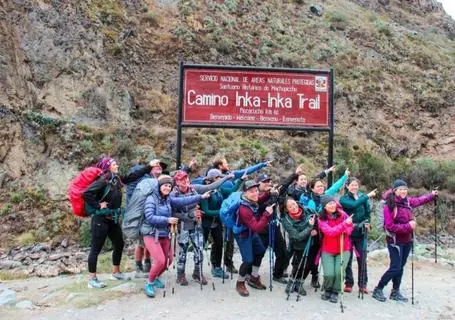
Trek Along the Inca Trail To Machu Picchu
7daysTrek Along The Inca Trail To Machu Picchu with Valencia Travel. We are a renowned Peruvian tour company offering trekking experiences throughout Peru.
card-type-tagAdventure
card-activity-tagModerate - Demanding
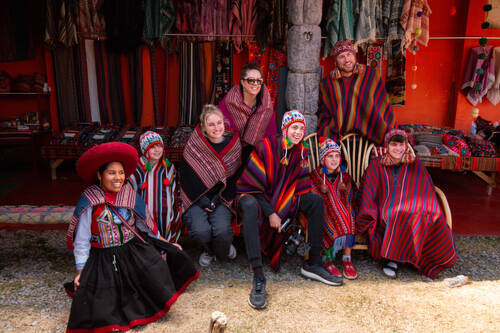
Classic Peru Trip
7daysValencia Travel's classic Peru trip is a bucket-list adventure. This 7 Day trip will take you on unforgettable experiences throughout the Peruvian heartland.
card-type-tagCultural, Gastronomy
card-activity-tagEasy
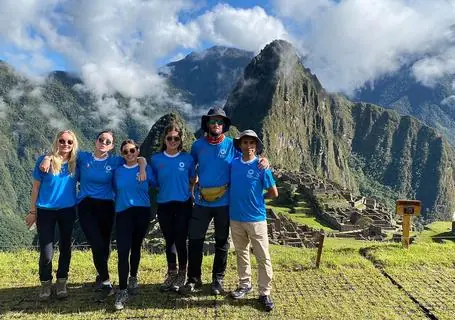
Classic Inca Trail
4daysThe Inca Trail trek to Machu Picchu is the ultimate bucket list hiking experience! Join us on this Classic 4 Day & 3 night Inca Trail Hike!
card-type-tagAdventure
card-activity-tagModerate - Demanding
asso-info-title
asso-info-description
